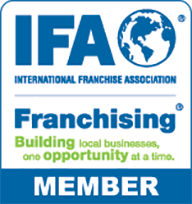Franchise Royalty Fees Explained
When you open a franchise, you will be required to pay some fees to the franchisor for the privilege of using their brand name and continuous support. There will be one-time fees like the initial franchising fee and there will also be ongoing fees, like the royalty fee.
The initial franchising fee will cover all the basics of getting a franchise up and running. The site selection, the build out, the initial training and the initial marketing are all covered by this upfront fee. Therefore, each franchise fee is used to start a specific franchise location and the franchisor will not really make any money off of these fees.
Each franchisee also pays royalty fees and they go toward the maintenance of the franchise as a whole. All of the support activities the franchisor provides will be funded through royalty fees. Field consultants, marketing campaigns, business strategies and other franchise-wide support initiatives are funded via the royalty fees the franchisor collects. In addition to these support activities, the administrative costs of running the entire franchise operation are also paid for with the royalty payments, as well as expansion efforts to recruit new franchisees into the system. Plus, these fees are how the parent company itself makes a profit.
Calculating Royalty Fees
Franchisors use a variety of methods to calculate royalty fees.
The most common method is by using a percentage of the gross sales of their franchisees. This is often in the range of five to nine percent, although it can be lower or higher than this. Most franchises fix this percentage, but in some franchises the percentage can fluctuate. It will go up or down depending on the amount of gross sales.
Certain franchisors will require a minimum royalty payment for each period. This could be a percentage or a specific dollar amount. And some franchisors calculate the royalty fee based on a set dollar amount that they base on different sales thresholds. For example, if your sales are within a certain range, you pay one set amount and if your sales are in a higher range, you pay a higher set amount.
Determining Royalty Fees
There’s no set formula for how a franchisor determines royalty fees. Some franchisors will just use the same numbers as their competitors while others will simply pick a number without any real basis for it. In an ideal situation, the royalty fee will permit the franchisee to make a healthy profit after all expenses and also be enough for the franchisor to make a profit and keep the entire franchise healthy when collected from all locations.
The economics of the individual franchise locations should be taken into consideration, including things like labour costs, rent, inventory, supply costs, etc. Once those are considered, the royalty fee should be determined so that both franchisor and franchisee make money.
In some franchise systems, owning a single location will not produce enough profit for both the the franchisor and the franchisee to make a profit. In those cases, franchisees will be required to own more than one location so the combined revenue pool will be large enough for both parties to make a profit. But, that is the exception rather than the norm when it comes to franchises.
There are also some franchises that don’t technically have a royalty fee, although it might be more accurate to say the royalty fee is simply collected in a different way. These franchises will not directly collect a fee from franchisees, but will require their franchisees to purchase products from the parent company or designated suppliers, usually at a marked up price, which takes the place of a straight fee.
Determining if a royalty fee is reasonable means calculating the average profit for a franchise location after all expenses (including fees) have been paid and comparing it to the initial investment to get your expected rate of return. Sign up for a free FranNet franchise search and consultation today and let us help you find your perfect franchising match.





